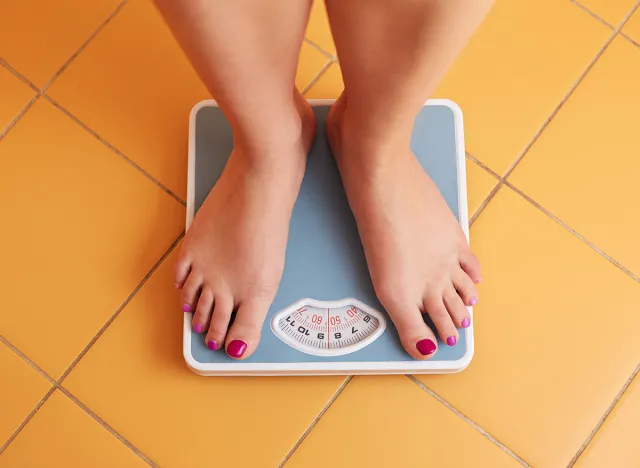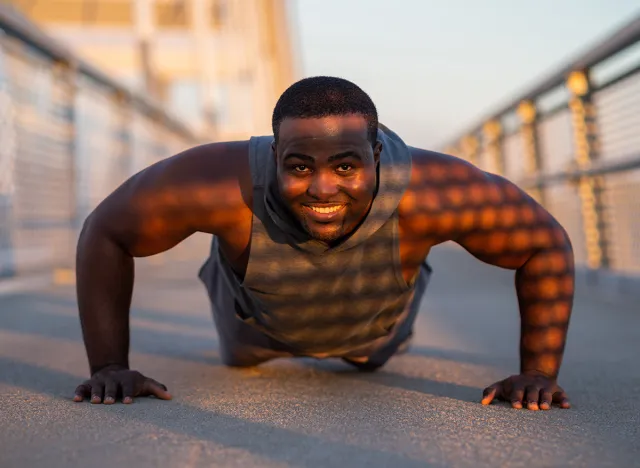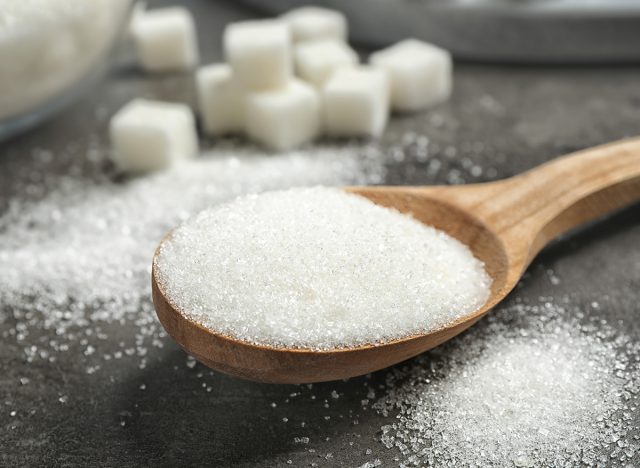Studies Show These are Proven Ways to Lose Visceral Fat

Belly fat may sound cute, but it can literally kill you. Technically known as visceral fat, belly fat lies deep within the abdomen, where it surrounds organs like the liver, intestines, and pancreas. It's highly metabolically active, and that's nothing but trouble: Visceral fat secretes substances that can damage vital organs and narrow blood vessels, raising your risk of cardiovascular disease, diabetes, liver disease, and more. But you can take some easy steps to reduce visceral fat. Read on to find out more.
Lose Weight

The easiest way to reduce visceral fat is to lose weight. "Weight loss alone can effectively reduce visceral fat," says W. Scott Butsch, MD, an obesity medicine specialist with the Cleveland Clinic. "By losing 10% of your body weight, you may lose up to 30% of your body fat."
Exercise Regularly

Dieting alone isn't enough to reduce belly fat, experts say; adding exercise is crucial. According to a 2020 study published in the journal Nutrients, exercise reduces visceral fat even if you don't lose weight. That's because it lowers circulating insulin (which tells the body to hang on to fat) and signals the liver to burn nearby visceral fat deposits. Moderate exercise combined with strength training seems to work best. Seriously, don't skip the strength training—a 2021 review of studies confirms it reduces visceral fat in healthy adults.
Related: 15 Proven Ways to Sculpt Your Dream Body by An Expert Coach
Avoid Added Sugar

That cupcake might not go right to your hips once you ingest it. But your belly is a different story. Visceral fat thrives on sugar. "Fructose, or sugar, causes fat cells to mature faster, specifically in the visceral fat," says the Cleveland Clinic. "A diet filled with fructose-containing sodas or drinks not only increases your calorie intake, but it impacts how the belly fat develops." Reduce the amount of sugar in your diet—including sugary drinks and juices, refined grains, baked goods, and processed foods—and your waistline will likely follow suit.
Related: The 11 Supplements Everyone Should Prioritize, According to a Nutrition Expert
Get Sufficient Sleep

Researchers at Wake Forest University found that dieters who slept five hours or less every night put on 2.5 times more belly fat than people who got adequate sleep. Experts say poor sleep alters the production of leptin and ghrelin, two hormones that regulate appetite, and that can increase feelings of hunger. Not sleeping enough can also increase the production of cortisol, a stress hormone that tells the body to hold onto fat around the abdomen. Experts, including the National Sleep Foundation, say you should aim for seven to nine hours a night.
Stressing Out

Stress can lead to "comfort eating" high-fat and sugary foods, and that combination is a shortcut to gaining belly fat, says a study published in The Annals of the New York Academy of Sciences. Additionally, chronic feelings of stress cause the brain to pump out cortisol, that chemical enabler of visceral fat. To keep belly fat at bay, manage stress through exercise and relaxation techniques.
💪🔥Body Booster: Cut out sugary drinks, sweets, and processed foods from your diet. This simple step can help shrink your waistline.




